Prior to the abolition of the practice in 1856 by the Declaration of Paris, there was a particular brand of pirate known as a privateer. Commissioned to carry out naval combat on behalf of royalty, it was a sanctioned style of buccaneering—a collection of bandits who weren’t law-abiding, per se, but also weren’t exactly outlaws.
They were referred to as corsairs.
In the heart of Tennessee’s whiskey country, a scant few hours from Jack Daniels and other operations rife with histories that in some cases predate such pirate lore—those with cemented traditions inextricably entrenched in the culture of the South—there is another company producing small-batch spirits that by comparison could be considered far more rogue than any 19th century marauder. They call themselves Corsair.
Corsair is barely eight years old, which puts them about a dozen or so years younger than many of the actual finished whiskeys produced in the state. But their reputation among imbibers has quickly established them as brothers in arms even with such seasoned compatriots.
Brûlée This B!+@#
2 oz. – Vanilla Bean Vodka
.25 oz. – Cream
6 – Mint Leaves
1 – Whole Egg
.5 oz. – Simple Syrup
Directions
Combine all ingredients in a mixing tin with 2 ice cubes. Shake hard for 30 seconds.
Add ice to tin and shake for 30 more seconds. Double strain into a cocktail glass and garnish with mint.
I wonder if, given the reverence for tradition in the region, this type of experimentation is a risk. Matt Strickland (whose position is one fellow small businesses will recognize to mean “wearer of many hats”) has the title of Brewer/Distiller/Research & Development, and he believes it is exactly this type of experimentation keeping risk at bay. He asks, “Jim Beam and Jack Daniels and Dickel are all a few hours away, so why do a Tennessee whiskey?”
To that point, someone who peruses the Corsair catalog at any given time (it changes frequently) knows there’s little danger of market confusion between their variants and those belonging to the sentinels of the state’s storied whiskey heritage. Their style is inventive and irreverent, bordering on iconoclastic. Their whiskeys include riffs like Triple Smoke, brewed with three house-smoked malts (cherry wood, peat and beechwood), and Buck Yeah, a version of the brown spirit made with buckwheat. Booze enthusiasts are treated to an eye-popping index of alternative takes of which they won’t likely tire any time soon: Quinoa Whiskey, Red Absinthe, whiskeys infused with hops, and vodka infused with vanilla beans.
In fact, the company seems to draw quite a lot from other facets of the alcohol industry. “The owners were really big into the craft beer scene; they were all home-brewers,” says Strickland. That part seems to explain much of the no-boundaries mentality Corsair has adopted. But it manages to keep experiments rooted in meticulous research, and the company has collected a diverse pool of human resources.

Strickland himself has a background in wine and craft beer, but took up distilling upon joining Corsair. “I was doing main production whiskey for a couple of years, but so many projects were winding up on my desk that I had to back out of it,” he says. “Now I think we’re probably one of the only distilleries in the country that can say they have an Innovation Department.”
Sitting down with Strickland and attempting to keep pace as he goes fully-automatic, rattling off said experiments, is like trying to trace the circulatory system without having set foot in Bio 101. Corsair has more than half a dozen business lines all running concurrently—seemingly in different directions, but ultimately intersecting. They are all powered by the same blood, all supporting the same creative body.
“We’re starting a vineyard, we’re starting a winery, we’re starting a brandy program that I’m heading up. We started a brewing program, we’re growing hops, we’re going to start growing our own grain, we have a malting program,” lists Strickland. “We’re constantly working on collaborations. We’re working on a collaboration with Green Flash Brewery [in San Diego] this summer. We try to do a lot of cross-branding.”
It doesn’t seem a wonder that one half of the two-person innovation team had to recuse himself from the distilling operations. When I originally inquired with Strickland about visiting the facility in Nashville, he suggested I block off several hours so we could also take a field trip to the farm, the vineyard and the malt house. This, I quickly realized, was an ocean where I’d only prepared for a stream.
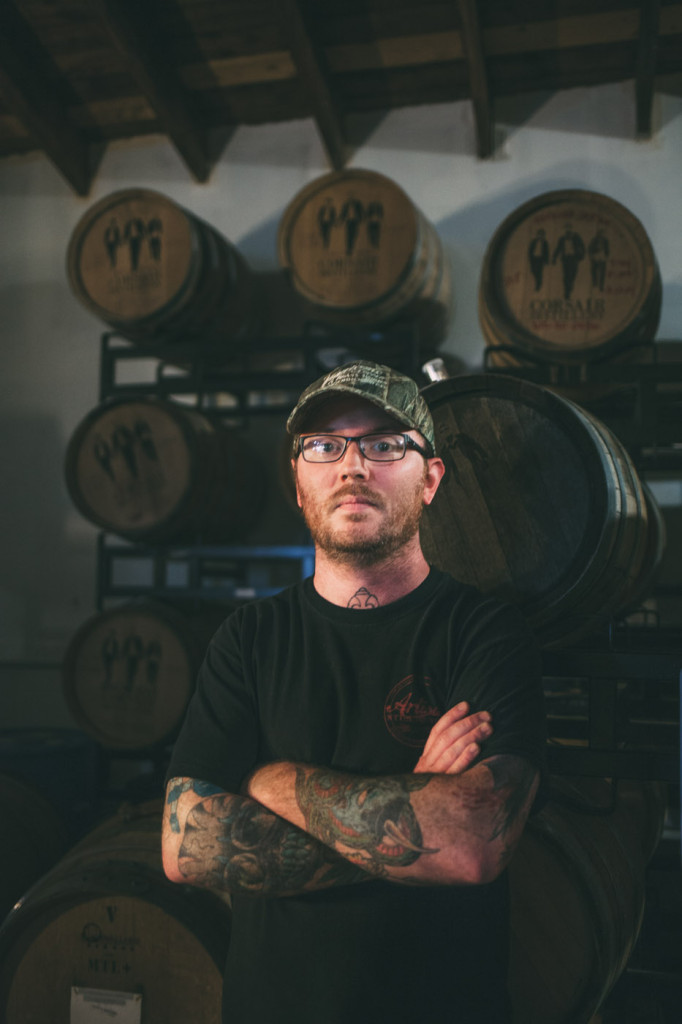
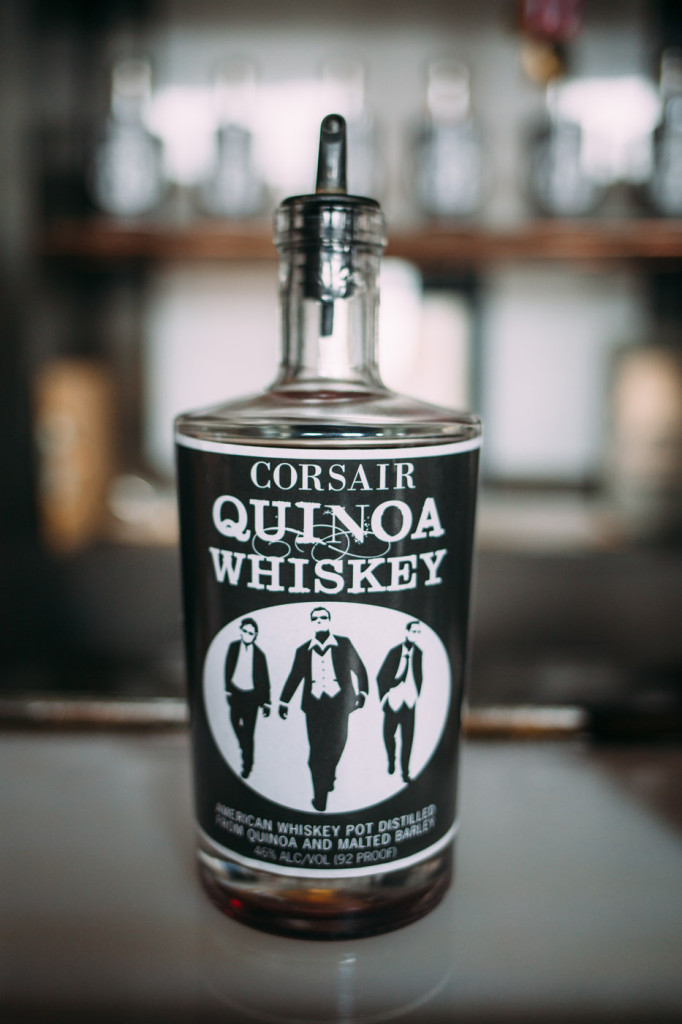
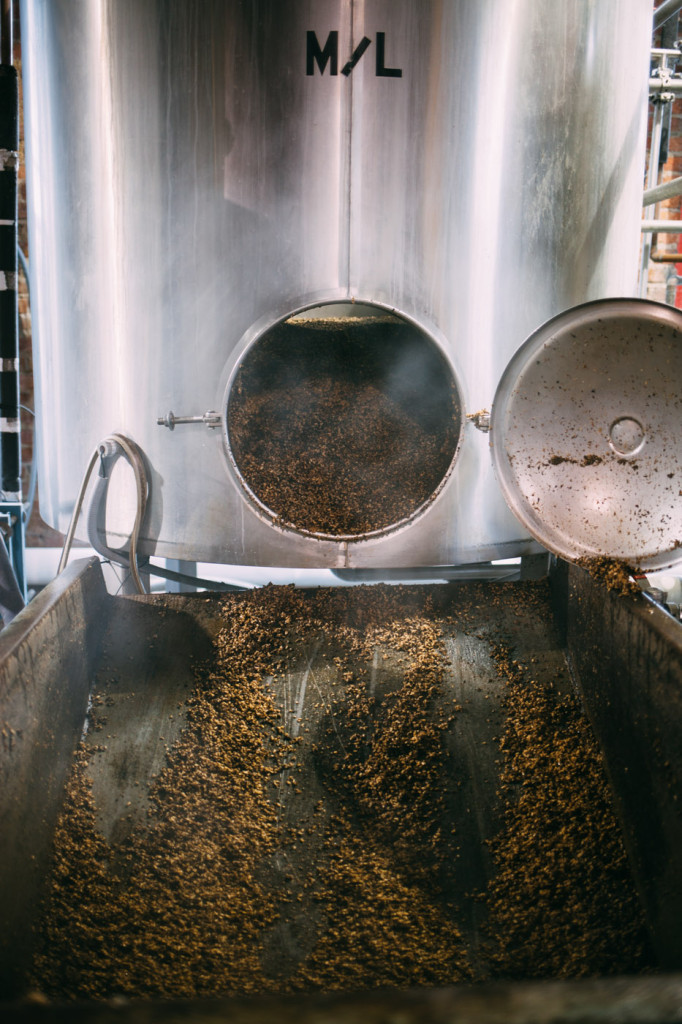
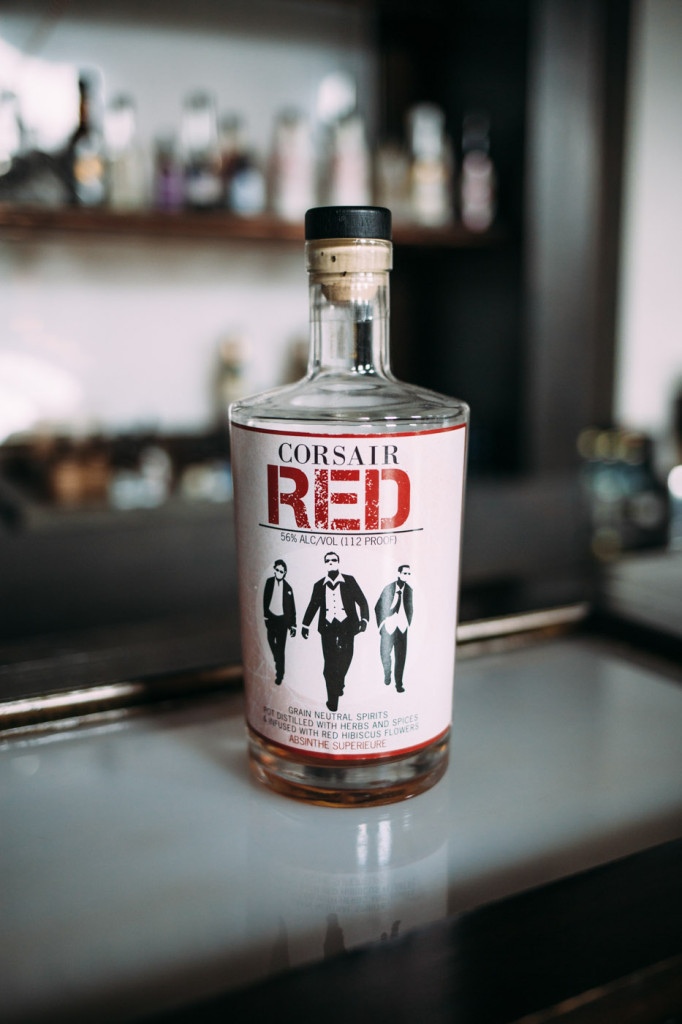
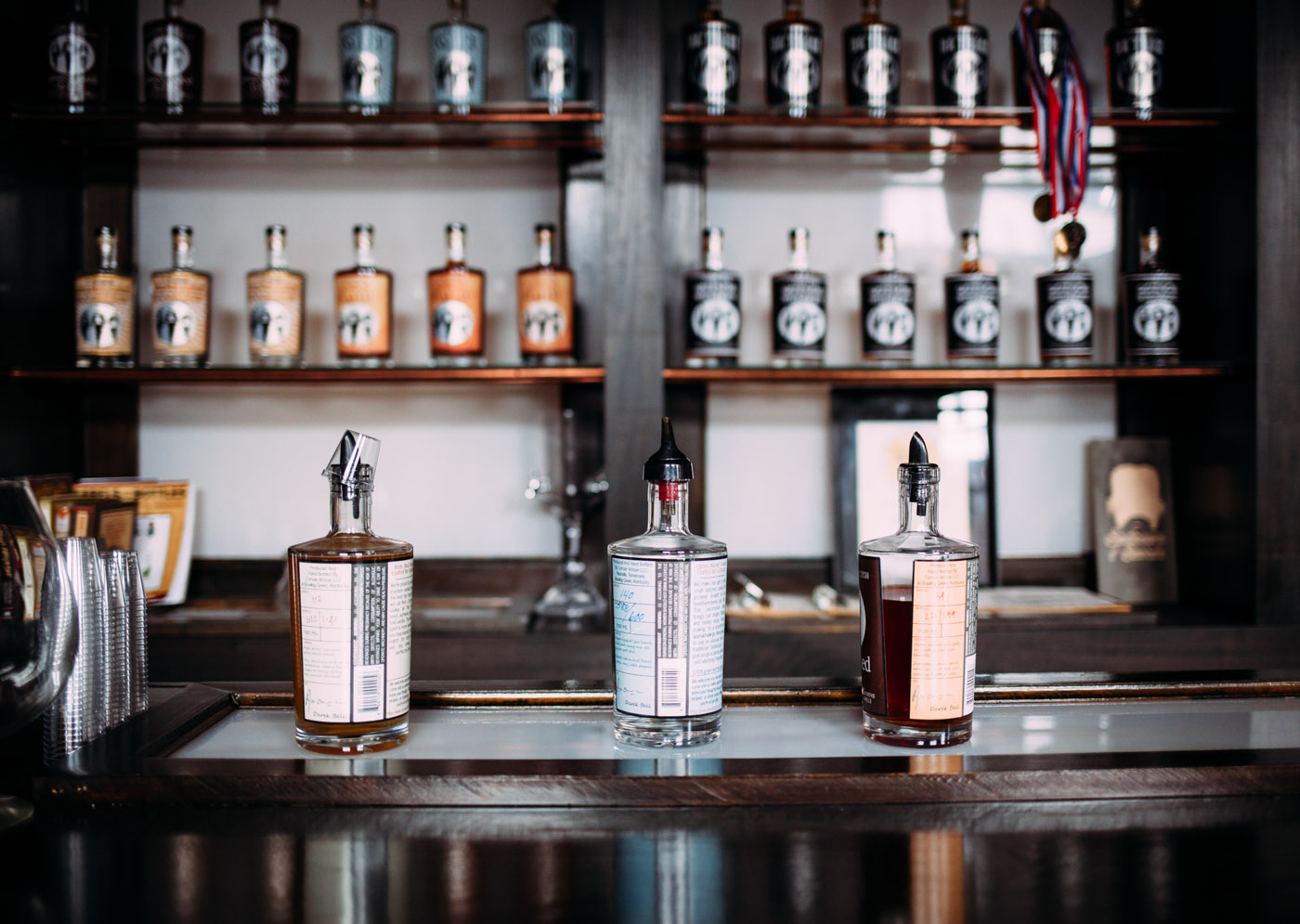
It’s about a 20-minute ride from the Corsair location at the center of Music City to the future vineyard. The austerity of the Southern sky, the trailing of Strickland’s pickup through a rain-streaked, windshield-wiped view off into what felt to this New Yorker like the uninhabited backwoods, effuses a foreboding climate—like something out of some ‘70s slasher. But on arrival, I’m summoned from my rented Kia into the Tennessee haze by the nutty, grandpa’s-hunting-jacket aroma of smoking wood, the source of which I find in two repurposed oil drums being gently tended to by another affable Corsair. And just like that, the aura is more like a cozy camping trip with close friends than a campy horror flick.
In the distance, knotted tree trunks reach from the floor of a field that fades from view only thanks to the day’s thick mountain fog. In just a few weeks, this pitch will be the lucky receiver of vines Strickland has hand-selected. “We’ll have Petit Syrah, Zinfandel, Sauv Blanc, a French-American hybrid, Nebbiolo and Viognier, which makes excellent brandy—nine varietals total. The goal is to have an estate whiskey and an estate brandy as well.”
“We’re starting with roughly five acres and then we’ll be expanding,” Strickland explains. “We’ll hopefully have around 30 acres of estate vines over the next five to seven years.”
Also on this property is the malt house. Though its size gives the impression that it is a full-scale operation to the uninitiated, I’m told it’s still very much an experiment, but one that gives Corsair control over each aspect of the process. “We definitely want to do ground to glass, but on a small scale. There will be specialty releases,” Strickland says. “We’ve been smoking grain for over a year. We’ve been doing the malt for about six months. There’s been a lot of dialing in.”
I’m later invited into a small barrel room for a peek at the cider program, as well as the brandy program. It’s apparent this is a passion for Strickland, the indulgence of which he tells me is not uncommon for the company.
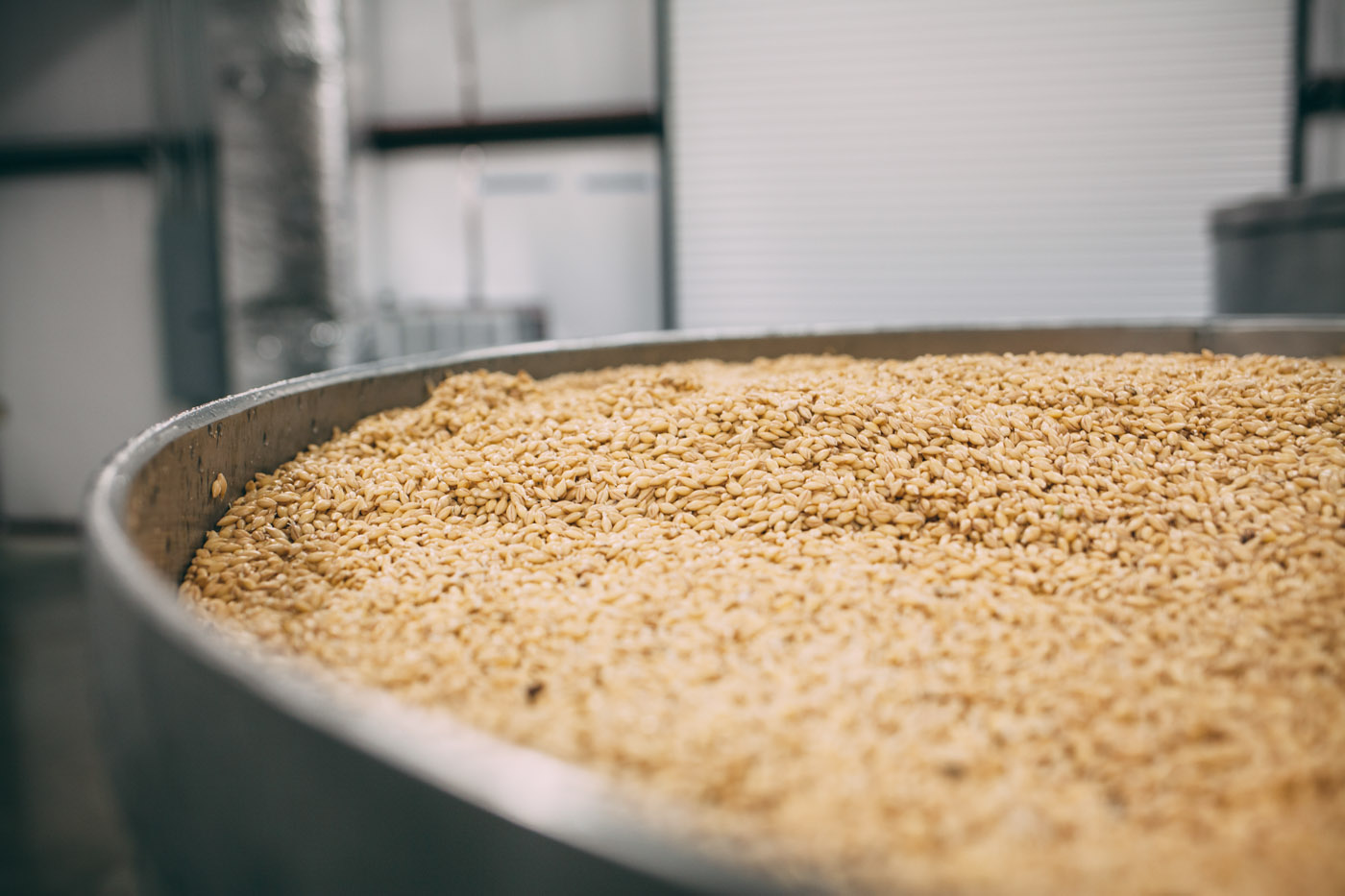
“We really do behave like this. If we have employees who come in with an idea, we try to make it happen. All you have to do is show you’ll put the work into researching it, and the company will spend money on the idea,” he says.
“Because the distilling industry is so deeply mired in tradition and it’s so expensive to make—so time-consuming—[companies] aren’t willing to take chances on new products. With beer, you can turn things over in two or three weeks and if it doesn’t work, well, whatever. We just don’t have that option,” Strickland continues. Fortunately for the Corsair Innovation Department, business is good. “A lot of our whiskeys are already sold before they’re even made.”
A tasting of their products displays a breadth of profiles and perceived inspirations. Their barrel-aged gin absorbs robust spice from the spent rum barrels in which it’s rested. A whiskey produced with 20-percent quinoa is nutty and warm, while Oatrage, with 51-percent oat and 22-percent coffee malt is, according to Strickland, a polarizing offering. On the palate, it’s formidably viscous and the coffee is assertive; it’s a contemplative product I can see sneaking it’s way into a composed cocktail under the care of a creative bartender. A sample of Galaxy Hop Whiskey has hints of resin and is brighter than any brown spirit I can remember tasting thanks to the citrusy quality of the hops. They’re provocative offerings, each requesting you take a good look rather than a passing glance.
Perhaps their products aren’t sanctioned by Southern Whiskey Royalty, but Corsair continues to allow ideation and innovation to chart their journey. The company is named as a tongue-in-cheek reference to the taxes to which distillers are subject. But perhaps their real tithe is to the mother of invention. Perhaps what we needed was a few mavericks to take chances, and to create the spirits we didn’t even know we wanted.







Our comments section is for members only.
Join today to gain exclusive access.